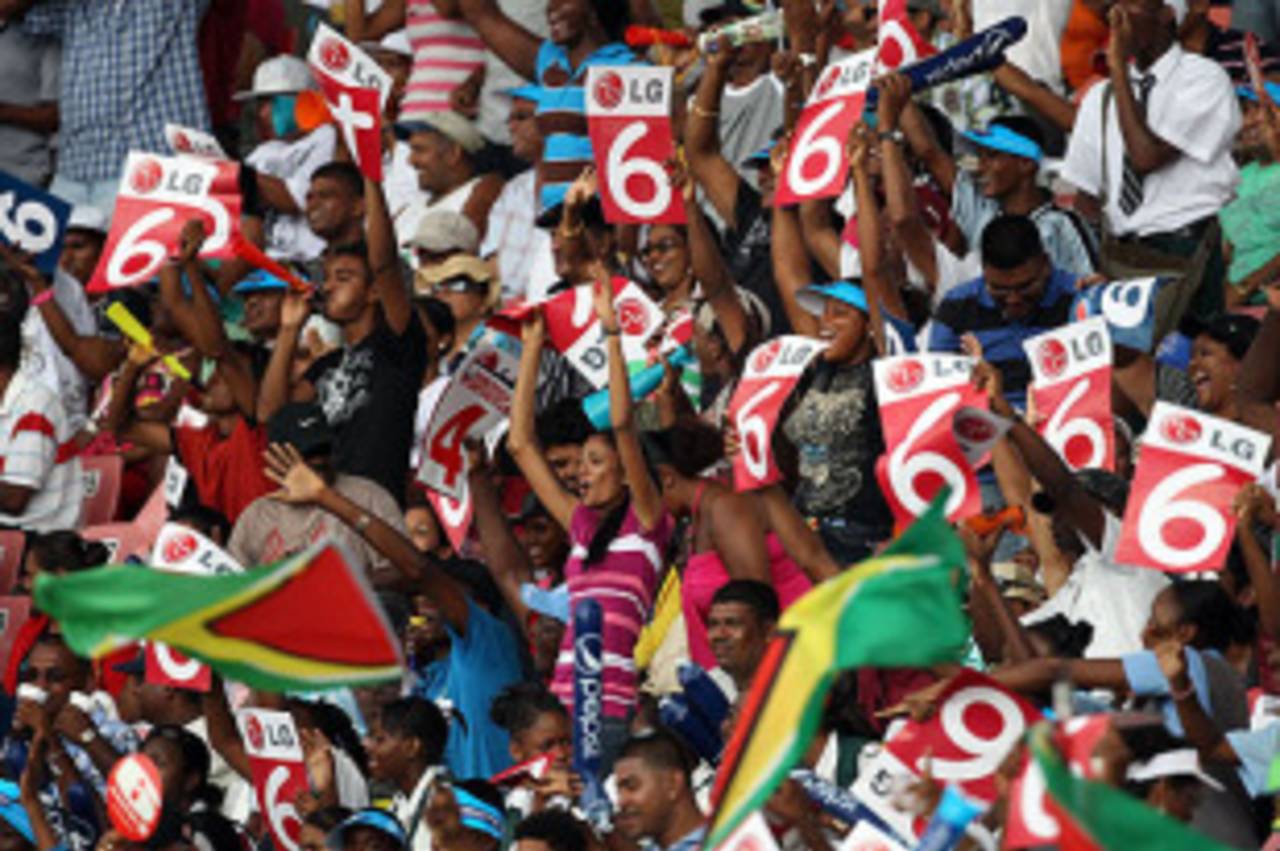Recipe for a successful tournament
An exhibition of top-quality cricket infused with the atmosphere of the Caribbean, the 2010 edition of the World Twenty20 was a success
Andrew McGlashan in Barbados
17-May-2010

This year's tournament was characterized by large, boisterous crowds, especially when the home team was playing • Getty Images
For the third time running the World Twenty20 has been a resounding success. It was staged in an atmosphere far more true to the Caribbean than the 2007 debacle, the cricket was of a superbly high standard and the winner has created much interest and discussion. The best two teams made the final, but predictable this tournament was not.
Thankfully, given what had gone on three years previous, the closest the event came to controversy was the intervention of Duckworth and Lewis in Guyana, and then a momentary alarm during the final when the teams left the field due to a broken sightscreen. But this time nothing ruined the spectacle.
The winners of these tournaments always provide plenty of stories; India's victory in 2007 sparked a revolution, Pakistan's in 2009 was a triumph against the odds and now England's was a historic moment for a side that had failed in world events for 35 years. And to break their duck they beat a team that had produced some wonderful cricket over two weeks. As many have said you have to earn success against Australia and England more than did that.
From start to finish the tournament was full of intrigue. Could West Indies spark a revival? How far could Afghanistan's fairytale last? What would the new skill or shot be this time?
West Indies didn't make the semi-finals, which was a disappointment because when they did play the crowds produced a memorable atmosphere. In Guyana, especially, during the Super Eights there was a real buzz around the stadium and even when they collapsed against Australia in St Lucia the fans kept singing, dancing and cheering. Huge issues remain in West Indies cricket that need resolving, but there is still a well of basic passion to tap into.
Afghanistan were brushed aside by their two Test opponents, but that doesn't come close to telling their story. They were not overawed by India's superstars and after slumping to 23 for 6 against South Africa bravely avoided the lowest Twenty20 international total. They have asked for help - let's hope it is forthcoming.
Elsewhere the significant strugglers were India and South Africa; one disturbed by the short ball, the other unable to pace a run chase. Both teams have much to ponder over the next few months, but it's Graeme Smith's side that appears closest to a breaking point with tensions running high back home. Success on the tour of West Indies is now a must with calls for Smith's departure growing.
Pakistan's victory against South Africa (and England's against New
Zealand) earned them a semi-final berth where they lost the greatest Twenty20 international as Mike Hussey played a blinder with his 24-ball 60. Pakistan were as unpredictable as ever, playing hopelessly against England, but raising their game against South Africa and showing the aggressive mindset with the bat needed to tackle Australia's attack.
Delving deeper into the event there were some issues. Local television was patchy to say the least, with many in Barbados unable to find suitable channels. The 9.30am starts for many matches, purely for the Indian TV market, also weren't ideal. However, unlike in 2007, there were no insurmountable problems and the ICC certainly learnt from previous mistakes over pricing and accessibility.
No one invented a new shot this year, but the skill levels continued to rise. Batsmen have never been so confident in their ability to clear the boundaries, yet outright slogging was a rarity. Bowlers at both end of the pace scale enjoyed success - Dirk Nannes made superb use of the new ball, while Graeme Swann's spell in the final was a masterclass of offspin.

Dirk Nannes was the leading wicket-taker of the tournament, despite going wicketless in the final against England•AFP
What was noticeable during the tournament was the minute detail that went into practice. No stone was left unturned. England's batsmen would stand in the middle of the ground and launch balls into the stand to find their six-hitting range, while fielders would take catches inches from the boundary line and ensure they stayed inside the rope.
Now, though, the game needs a break from Twenty20. It has been 10 solid weeks of the format with this event rolling straight on from the IPL. The appeal has never been stronger, but moderation is required to avoid reaching a saturation point and it would be foolish to think that the landscape of the game doesn't continue to change.
Prior to this period of Twenty20 action Test cricket had enjoyed a mini-revival with some fiercely contested series, but unlike the short format it only remains really healthy in a handful of countries. Haroon Lorgat, the ICC chief executive, recently told Cricinfo he was now far more confident in the five-day game's standing but no one can afford to be complacent.
Lorgat also said that there is unlikely to be any increase in the volume of Twenty20 at international level so it will remain predominantly a domestic game, which will continue to add pressure to the crowded fixture lists. Yet, while the format's rise has brought many challenges to game, and some still sniff at the concept, it has also done a huge amount of good and what the last two weeks has shown is that nothing matches the intensity, passion and skill level of international competition.
Andrew McGlashan is assistant editor of Cricinfo